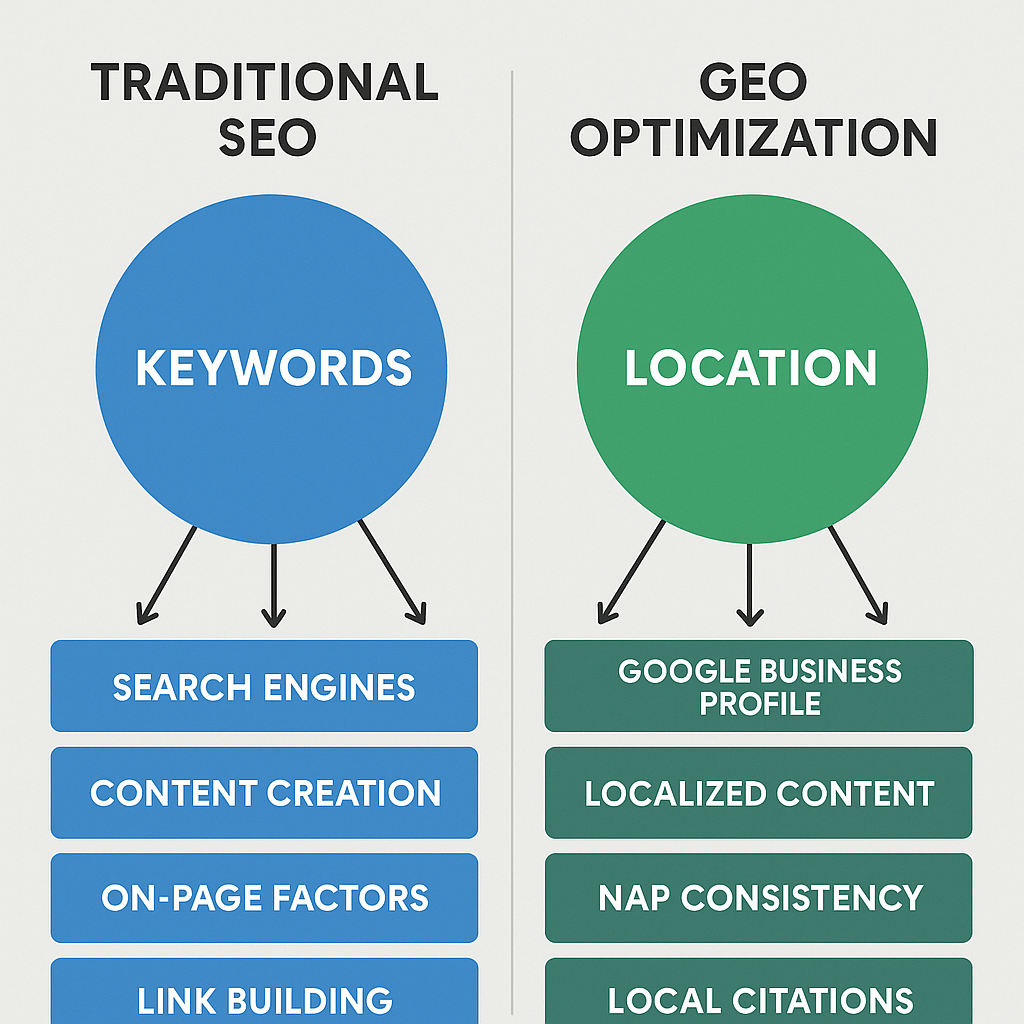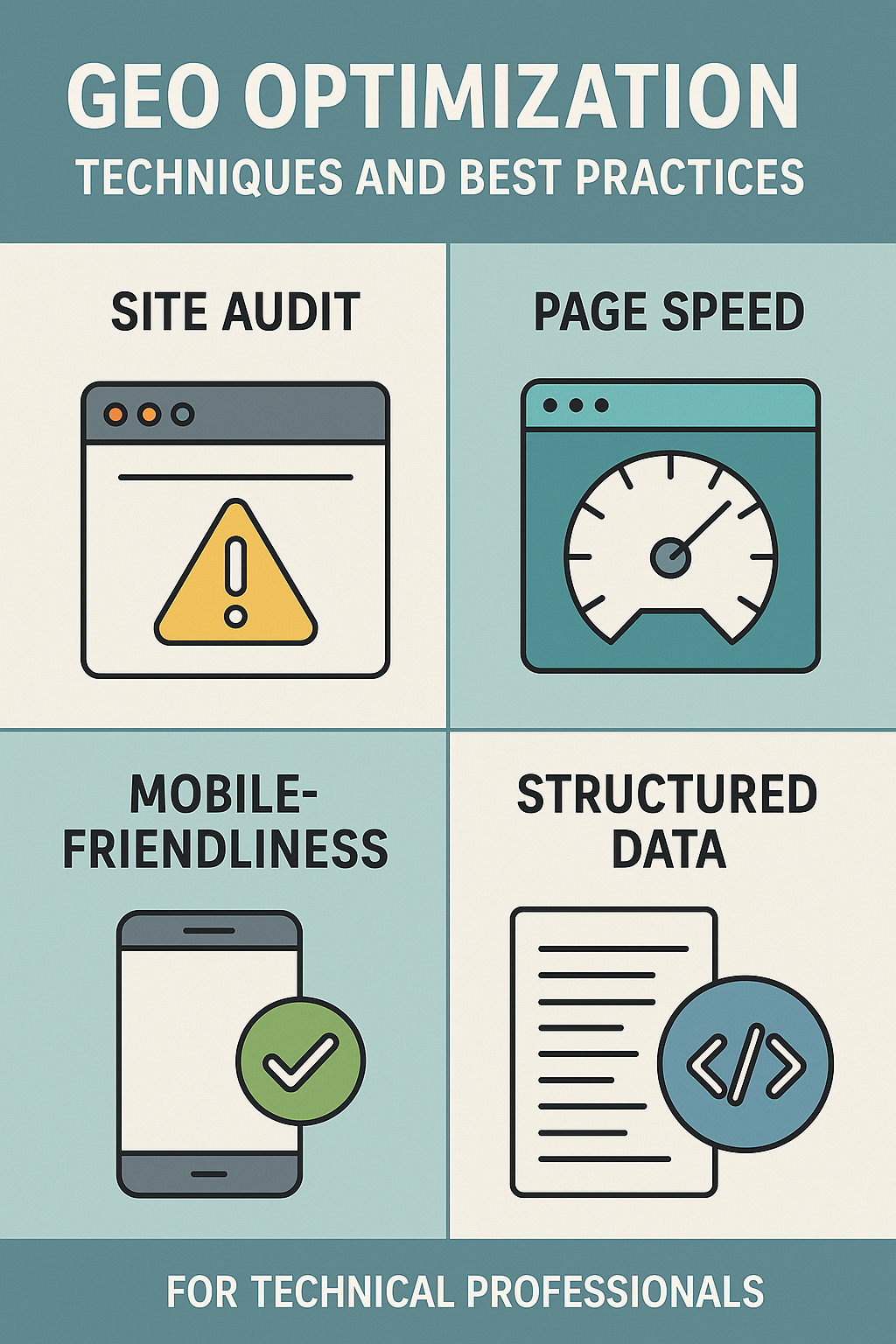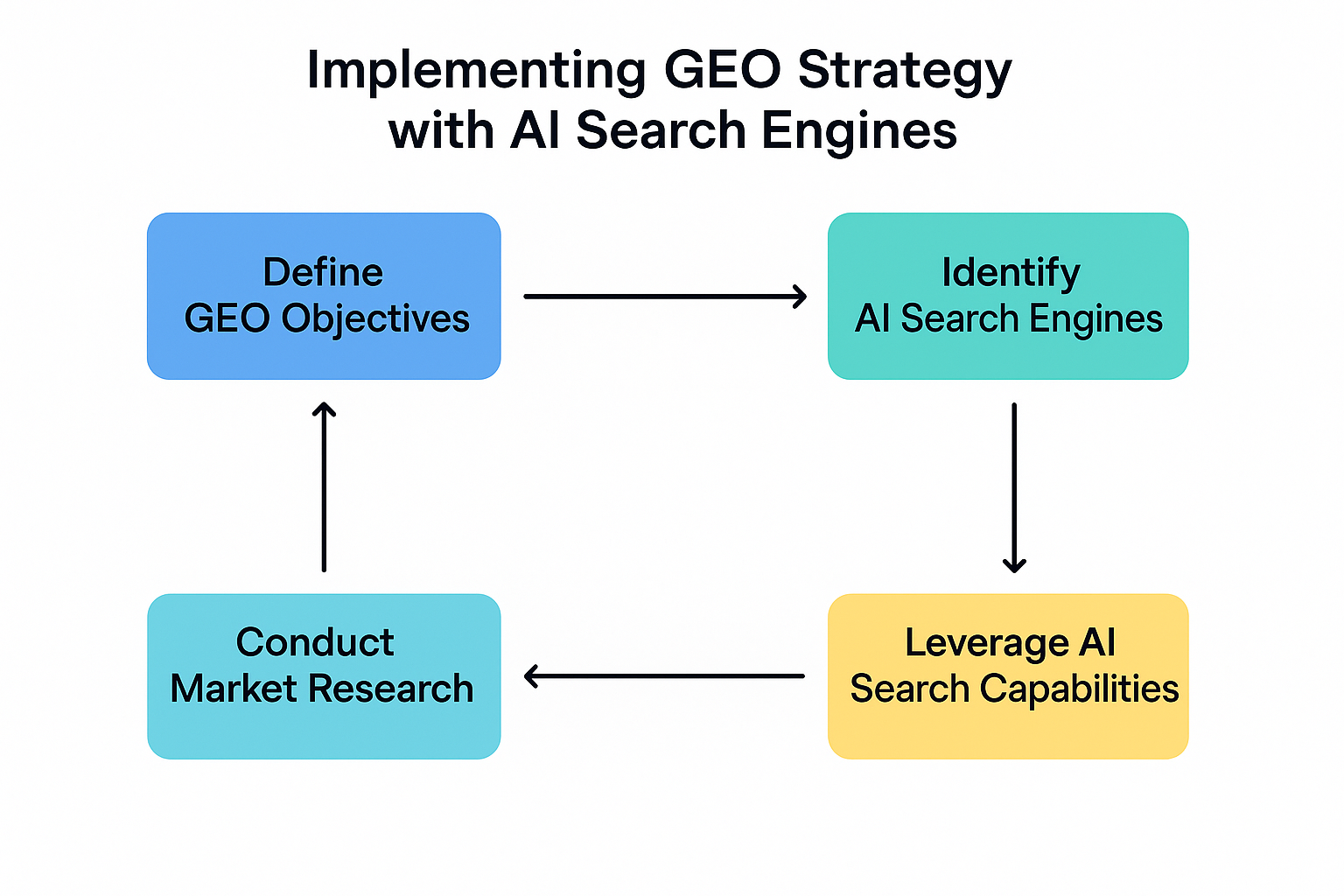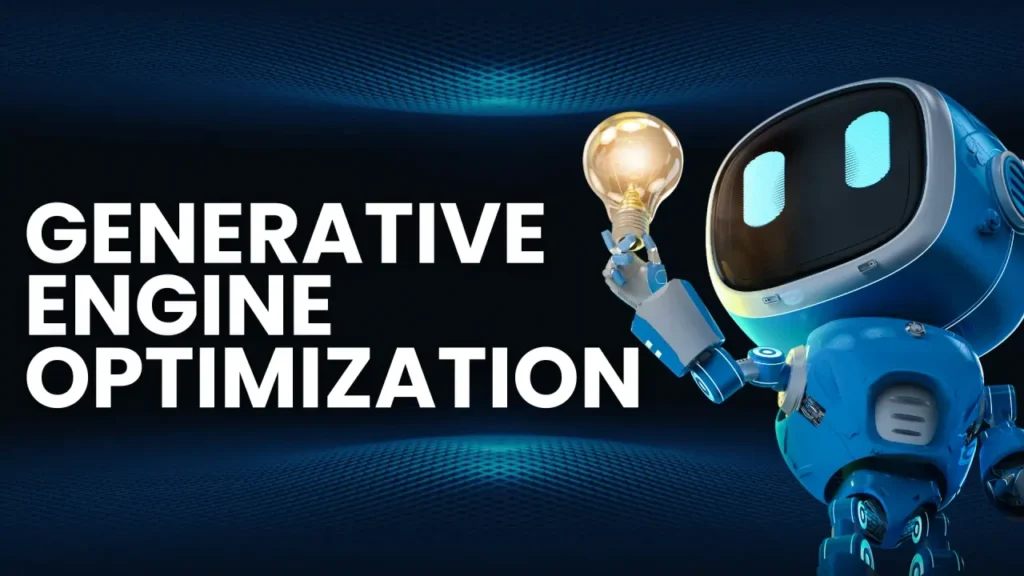Generative Engine Optimization (GEO) represents a transformative shift in how content gets discovered and consumed online. As AI-powered search engines like ChatGPT, Perplexity, and Google’s AI Overviews become dominant gateways to information, businesses must adapt their digital strategies to remain visible and competitive.
What is Generative Engine Optimization (GEO)?
Generative Engine Optimization (GEO) is the process of optimizing website content to boost its visibility in AI-driven search engines and generative platforms. Unlike traditional search engines that provide lists of links, generative engines synthesize information from multiple sources to provide comprehensive, contextually relevant responses to user queries.
GEO positions your brand to appear in AI-generated results when users search for queries related to your products, services, or areas of expertise. The goal is to ensure your content is recognized and utilized by large language models (LLMs) when formulating answers to user queries.

How Does GEO Differ from Traditional SEO?
While both GEO and SEO aim to enhance content visibility online, they target fundamentally different types of search engines and user experiences.
Traditional SEO Characteristics
Primary Focus: Traditional SEO optimizes for search engines like Google and Bing that provide ranked lists of web pages. The process involves keyword optimization, backlinks, meta tags, and technical website improvements to achieve higher rankings in search engine results pages (SERPs).
User Journey: In traditional SEO, users click through to individual websites from search results to find complete answers. The focus is on driving traffic to specific pages and improving click-through rates.
GEO Characteristics
Response Generation: GEO optimizes content for AI systems that synthesize and prioritize information, generating comprehensive responses directly within the search interface. Instead of providing links, generative engines create contextually relevant answers by combining information from multiple sources.
Content Processing: Generative engines use advanced natural language processing to interpret user intent more accurately and deliver nuanced, precise responses. They prioritize content that is clear, contextually relevant, and easily parsed by AI algorithms.
Information Synthesis: While SEO aims to rank individual pages, GEO focuses on how AI integrates and synthesizes content from multiple sources to provide comprehensive answers.

Why is GEO Important for Your Business?
The rise of generative AI is fundamentally changing search behavior and content discovery patterns. Understanding and implementing GEO strategies is crucial for several reasons:
Shifting Search Landscape
AI search tools now account for approximately 10% of website traffic for many businesses, with this percentage growing rapidly. Platforms like Perplexity deliver higher engagement rates and better conversion rates compared to traditional search traffic.
Enhanced User Experience
Generative engines provide immediate, comprehensive answers rather than requiring users to navigate through multiple websites. Users increasingly prefer asking AI platforms direct questions instead of scrolling through search results.
Competitive Advantage
Businesses that adapt to GEO early gain significant advantages over competitors who focus solely on traditional SEO. Lower-ranked websites particularly benefit from GEO implementation, as generative engines don’t rely as heavily on traditional ranking factors like backlinks and domain authority.
What Are Generative Engines?
Generative engines are AI-powered platforms that combine traditional search capabilities with advanced language models to provide contextual, synthesized responses. These systems work through several key processes:
Core Functionality
Query Interpretation: Generative engines analyze user queries using natural language processing to understand intent, context, and semantic meaning.
Information Retrieval: They search and retrieve relevant information from multiple online sources, often using retrieval-augmented generation (RAG) to access real-time data.
Response Synthesis: Advanced AI models combine and synthesize information from various sources to create comprehensive, coherent answers.
Source Attribution: Modern generative engines provide inline citations and source references, maintaining transparency about information sources.
Popular Generative Engines
ChatGPT: OpenAI’s conversational AI platform that can search the web and provide detailed responses with source citations.
Perplexity: A research-focused AI search engine that specializes in providing comprehensive answers with clear source attribution.
Google AI Overviews: Google’s integration of AI-generated responses directly into search results.
Gemini: Google’s advanced language model that provides conversational search experiences.
Microsoft Copilot: Integrated AI assistance that combines search with productivity tools.
How Do Generative Engines Work?
Understanding the technical mechanics of generative engines is essential for effective GEO implementation.
Information Processing Pipeline
Step 1: Query Analysis: The system analyzes user queries using natural language understanding to determine intent, context, and required information depth.
Step 2: Source Discovery: Generative engines search across indexed web content, databases, and knowledge graphs to identify relevant information sources.
Step 3: Content Extraction: AI algorithms extract relevant passages, statistics, quotes, and factual information from identified sources.
Step 4: Synthesis and Generation: Large language models combine extracted information to create comprehensive, contextually appropriate responses.
Step 5: Citation and Attribution: The system adds inline citations and source references to maintain information credibility.
Technical Architecture
Generative engines typically employ a two-step architecture:
Retrieval Component: Searches and identifies relevant sources (usually top 5-10 results)
Generation Component: Uses LLMs to synthesize information into coherent responses

Key GEO Strategies and Techniques
Implementing effective GEO requires understanding specific optimization techniques that align with how AI systems process and prioritize content.
1. Content Structure and Formatting
Semantic Clarity: Structure content with clear headings, logical flow, and descriptive subheadings that AI systems can easily parse. Use H1-H6 heading hierarchies to create scannable content structures.
Modular Content: Break content into focused sections of 150-300 words, with each section answering a specific question. This modular approach allows AI systems to extract relevant chunks more effectively.
Question-Based Organization: Structure content around common user questions and provide direct, comprehensive answers. Include FAQ sections that offer clear question-and-answer pairs.
2. Authority and Credibility Signals
Source Citations: Include references to reliable, authoritative sources throughout your content. According to research, citing sources can improve visibility by 30-40% in generative engine responses.
Statistics and Data: Incorporate quantitative data, research findings, and statistical information to support your claims. AI systems prioritize content backed by data and evidence.
Expert Quotations: Include quotes from industry experts, thought leaders, and authoritative figures to enhance content credibility.
Author Expertise: Clearly display author credentials, experience, and expertise to establish E-E-A-T (Experience, Expertise, Authoritativeness, Trustworthiness) signals.
3. Technical Optimization
Schema Markup: Implement structured data markup using JSON-LD to help AI systems understand content context and relationships.
Clean HTML Structure: Ensure content is accessible through clean HTML and proper semantic elements like <article>, <section>, and <nav>.
Fast Loading Times: Optimize page speed to ensure content loads quickly, as AI systems often have tight timeouts (1-5 seconds) for content retrieval.
Mobile Optimization: Ensure content is mobile-responsive and accessible across different devices and platforms.
4. Content Quality and Depth
Comprehensive Coverage: Create in-depth content (1500+ words for key pages) that thoroughly covers topics from multiple angles.
Natural Language: Write in conversational, natural language that mirrors how users actually ask questions.
Contextual Richness: Provide comprehensive information with relevant examples, case studies, and supporting evidence.
Unique Vocabulary: Use specific, industry-relevant terminology while maintaining readability for both AI systems and human users.
5. Brand and Entity Optimization
Clear Entity Mentions: Explicitly mention your brand, products, people, and partners by name to help AI systems connect your content with recognized entities.
Brand Authority Building: Establish strong online presence across authoritative directories, databases, and third-party sources.
Consistent Information: Maintain consistent brand information across all online platforms and sources.
Common GEO Mistakes to Avoid
Understanding common pitfalls helps ensure successful GEO implementation.
Content-Related Mistakes
Over-Reliance on AI-Generated Content: Avoid publishing unedited AI content without human oversight, as this can lead to factual errors and poor quality.
Keyword Stuffing: Don’t focus solely on keyword density; instead, prioritize natural language and semantic relevance.
Ignoring User Intent: Avoid creating content that doesn’t address the underlying needs and questions of your target audience.
Neglecting Content Updates: Failing to regularly update content can result in outdated information being featured in AI responses.
Technical Mistakes
Blocking AI Crawlers: Ensure your robots.txt and firewall settings allow AI crawlers to access your content.
Poor Site Structure: Avoid complex navigation and unclear content hierarchy that makes it difficult for AI systems to understand your content.
Slow Loading Times: Don’t ignore page speed optimization, as AI systems may skip slow-loading content entirely.
Missing Metadata: Ensure all pages have appropriate title tags, meta descriptions, and structured data.
Strategic Mistakes
Short-Term Focus: Avoid implementing only quick fixes; GEO requires long-term strategic thinking and consistent effort.
Ignoring Analytics: Don’t neglect to track and measure GEO performance through referral traffic and citation monitoring.
Conflicting Signals: Avoid sending mixed technical signals (like combining noindex tags with canonical tags).
Measuring GEO Success
Tracking GEO performance requires different metrics than traditional SEO.
Key Performance Indicators
Referral Traffic: Monitor traffic from AI platforms like ChatGPT, Perplexity, and Gemini.
Citation Frequency: Track how often your content gets cited in AI-generated responses.
Brand Mentions: Monitor mentions of your brand across AI platforms, even without direct links.
Content Visibility: Use tools to test whether AI systems can access and understand your content.
Measurement Tools
AI Search Testing: Use tools like Andi Search to test whether your content appears in AI-generated responses.
Brand Monitoring: Implement social listening tools to track brand mentions across various AI platforms.
Analytics Integration: Set up tracking for referral traffic from generative engines in your analytics platform.
The Future of GEO
Generative Engine Optimization represents just the beginning of a major shift in how information gets discovered and consumed online. As AI systems become more sophisticated and widespread, businesses that master GEO techniques will maintain competitive advantages in digital visibility and customer engagement.
The integration of traditional SEO principles with GEO strategies creates a comprehensive approach to content optimization that addresses both current and future search behaviors. By implementing these techniques consistently and measuring their effectiveness, organizations can ensure their content remains discoverable and valuable in an AI-driven information landscape.
Success in GEO requires ongoing adaptation and refinement as generative engines continue to evolve. The businesses that start implementing these strategies now will be best positioned to thrive in the generative AI era of search and discovery.




Pingback: SearchGPT Guide: AI Search Engine Basics & How to Use It | TechOreo Blog